
 French Marine Nationale – Oceanic Types 1923-1947:
French Marine Nationale – Oceanic Types 1923-1947:Caïman, Dauphin, Espadon, Marsouin, Morse, Narval, Phoque, Requin, Souffleur
WW2 French Submersibles:
Surcouf | Requin class | Saphir class | 600/630 Tonnes class | Redoutable class | Aurore class | Roland Morillot class | Emeraude class | Phénix classThe Requin (“shark”) class submarines: Continuing with our study of interwar submersibles in 2023 with 100 years of distance (1923) here is another entry: The first French Oceanic submersible design of the interwar, launched 1924-27. The 1,000 tonnes models drew some inspiration from German designs and certainly brought a number of innovations, later cristallized in the excellent Redoutable class of the 1930s, large oceanic models equivalents of the German Type IX. Their career both on the side of Vichy and Free France reflected a complicated carrer in WW2, with only one surviving the war. #ww2 #frenchnavy #marinefrancaise #submersible #submarine #interwar #requin
Context: Renewing the Submarine Force (1919)
In 1919, the French WWI submarine force legacy was not particularly appealing: Akthough early in the game, the designs that were produced over the years in small batches and prototypes were often overengineered and unreliable, with the exception of those of the standardized Laubeuf type. In the war proper, only a few novel designs were built, like the Amphitrite, Bellone, Dupuy de Lôme, Diane or Joessel class in 1915-17. These were just pairs or trios delivered by civilian yards and rather small, confined to the Mediterranean.

Daphné in the 1920s
However the early Oceanic, 920 tons Lagrange class (four, completed postwar) saw some service until 1937, by default on the atlantic, as well as the much smaller Armide class requisitioned from foreign orders, built by Schneider on double-hulled Laubeuf type designs with Schneider-Carel diesels for the Mediterranean, followed by the O’Byrne class (launched 1919) which were truly the first postwar French models, although still using prewar designs.
The “game changer” was the Maurice Callot (1921) built at FC de la Gironde (Bordeaux), and designed in 1915-16 initially as the first dedicated minelayer types in French service. Only laid down in May 1917, other priorities delayed their completion until 1922. They used the original Normand-fenaux mine well delivery system and the classic Laubeuf double hull. The sole experimental submarine was the forebear of the “diamond” minelayer serie (1928 Saphir class).
Now this disparate fleet was supposed to be the main tool for a Navy that had been left in disregard during WWI as the land war took all the funds and workforce, and considerably weakened by the interpretation of the Young School by successive ministers. The Washington Treaty, as for many other matters, was instrumental for France. Famously capped, -despite its extensive colonial Empire- to the level of the Regia Marina, the Marine National was again constrained to choose a path, again in the shadow of the Army, of underfunded development which in turn dictated a largely asymetric type of fleet, placing the emphasis on commerce warfare with the next generation of 10,000 tonnes Washington Cruisers, and super-destroyers that caused quite a stir in naval circles, since no cap was defined in this area.
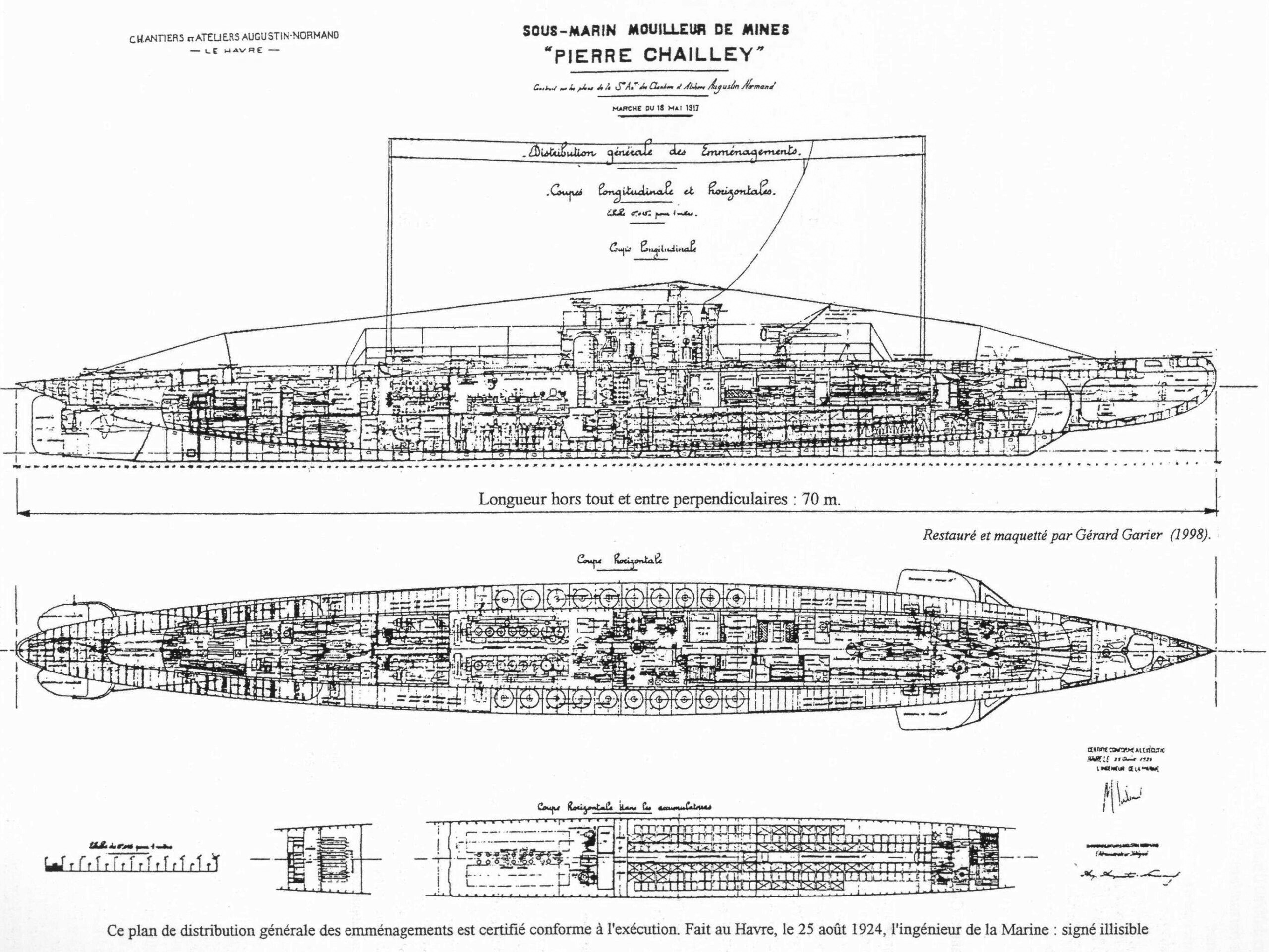
Original Plans of Pierre Chaillez, the last oceanic submarine delivered to the Marine Nationale, started in 1917 but modified and completed in 1922.
The naval rivalry with Italy was largely the result of both a similar global displacement authorized and similar conclusions reached by both Nations towards the way to control the main theater vital for French colonial possessions, the Mediterranean.
The third asset, to be severely restricted by the British Admiralty during treaty negociations, eventually was conceded to France as a concession for other grants, and the admiralty dreamed of a 250 to 300 submarine fleet. Most politicians thought that such a fleet would have been a deterrent for any nation. The latter view was largely a modern interpretation of the 1890s Jeune Ecole (“Young School”) passion for torpedo boats, with similar numbers in service when WWI broke out.
France unlike Italy did not saw a use for very small torpedo crafts, motor torpedo boats, but did not have the experience of the Adriatic and MAS as the Regia Marina, leaving this category completely to its rival, just as standard torpedo boats.
But plans for a large, coherent French Submarine fleet both for offense and defence were to be organized around three types in 1919:
-1500 to 2500 tonnes 1st class oceanic models to wage commerce warfare in the Atlantic or from distant stations (including cruisers such as the massive Surcouf)
-600 tonnes 2nd class coastal submersibles for the Mediterranean
-900 tonnes minelayers types for more offensive operations, commerce interdiction and harbour blockade.
However at this stage, negociations that were leading to the Washington Treaty had any significant naval plans postponed until terms were known. At the same time, France would obtain also by treaty war reparations, including a number of ex-German U-Boats, that will be scrutinized in detail and reports compiled to define a new generation of submersibles. These were Victor Reveille, (U79), Jean Auric (U 108), or René Audry (U 119) and 36 more awarded to the French, the largest amount of any belligerent, also creating some consternation, but also a concession. Léon Mignot (ex. U108), René Audry (ex. U119), Halbronn (ex. U139), Pierre Marrast (ex. U162), Jean Roulier (ex. U166), Trinité Schielemans (ex. UB94), Carissan (ex. UB99), Jean Corre (ex. UB155) were part of these pressed into service after the war under French flag, all discarded in 1935-37. See also French WW2 submarines on this preliminary chapter.
They represented nearly any type in use in the Kaiserliches Marine’s U-Boat Force, a good sampling of German experiments, plus extra spare hulls usable for cannibalization and keep them afloat as long as possible. Now, saying that early French Submarine types were merely copies of German types would be grossly simplistic and outright false given the set of specifications given to the new models planned. Unlike Germany, France had far-flung colonies and stretched lines of communication, plus local vulnerabilities. German models were tailored to wage commerce warfare in the Atlantic and North sea.
The French fleet’s expansion program voted in 1922 and 1923 advocated the construction of new submarines based on the three type classification of 1919, and in part fuelled by early report of experience gained from examining and using ex-German U-boats.
The 1920 C4 Program
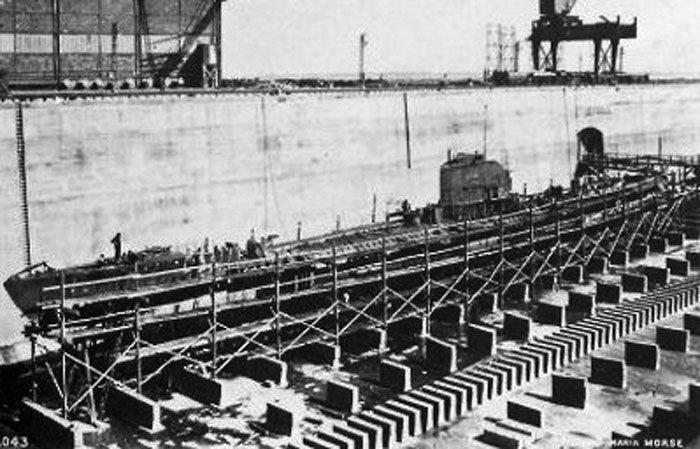
Morse under construction at Cherbourg yards (Cotentin peninsula between Britanny and Normandy).
The first type of the “Sous-marin de première classe de grande patrouille programme 1922” (“1st class great patrol submarine, 1922 Program”) that as to be provided answered specification for a medium oceanic type. In 1920, indeed, the Superior Council of the Navy recommended the launch of a patrol submarine construction program called the “C4 project”, of 1,100 tons, to be designed by the Technical Section of the Naval Construction Department. This project was to combine qualities observed in German submarines, notably a robust hull and equipment, fast-diving, good periscope optics, and armament in contrast to prewar French designs that lacked these partly but combined with qualities associated by WWI French designs, like excellent navigation performance and deep diving, stability and speed underwater.
But the committee soon recommanded to increase the safety depth below 80 m, notably to allow the submarine to “land” on the continental shelf, to save battery, reduce noises and thus, prepare and ambush or escape destroyers.
Jean-Jacques Roquebert’s final design
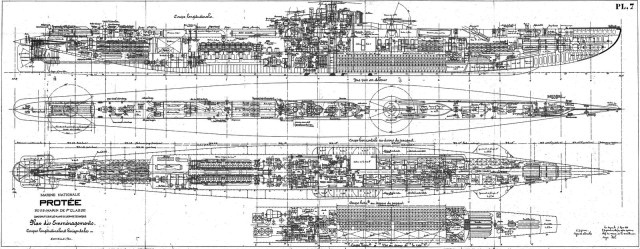
Note: Can’t find the original blueprints and plans of the submarine at Chatellerault archives. It was apparently never scanned and digitized. Instead this is Protee of the following 1500 tons class. Both designs were rather similar, the second one being mostly stretched out.
J.J. Roquebert’s double-hulled submarine was relatively classic in shape, with a low profile and modest rounded bow, better suited for surface operations in the Mediterranean than the Atlantic. The conning tower was a brand new design, which drew inspiration both from French and German designs. It had a rounded forward section, pointed after section with bulwarks gracefully sloping towards the aft platform supporting the AA gun. The hull displaced 1,150 tonnes (1,132 long tons) when surfaced and 1,441 tonnes (1,418 long tons) when submerged. It measured 78.30 m (256 ft 11 in) from tip to tip, with a external hull overall beam of 6.84 m (22 ft 5 in) (so a 1/11 ratio) and a draught of 5.10 m (16 ft 9 in) at max load. She carried a crew of 14 officiers and 36 petty officer and ratings.
The whole “tube”, inner hull, with thick pressure walls, was separated in four sections and their respective bulkheads: Torpedo room, Crew’s quarter and Command Post, Engine room, and aft torpedo room. In the engine room was located one after the others, the two French Sulzer 1450 HP 2-stroke diesel engines, followed by the oil tanks and electric engines. The batteries due to their weight were located below the latter.

French Submarine Morse – Q117 – USN Axis Submarine Manual, ONI 220-M (cc)
These diesels were not very successful, with 10% higher consumption than usual 4-stroke diesels used by other countries. They were also more fragile but were lighter and more compact, and easier to maintain and replace. This choice prioritized speed over other considerations, notably the radius of action. Their surface speed was indeed set to 15 knots, which was average at the time. The later Type VII were indeed capable of 17.7 knots.
Roquebert improved their diving performances as requested as making them the first French submarine to be equipped with a remote control of the ballast purge valves. This automation enabled a dive in 75 seconds, almost twice that of previous models. Overall, destined for reconnaissance and colonial service as to attack enemy shipping lanes they had the large range required and better diving depth due to a more soldily built pressure hull but suffered while in service of poor maneuverability (in part due to their lenght ratio ans small rudder), and still lacked the required speed for surface actions. All were later corrected by the Redoutable class from 1929.
Since these patrol submersibles were setup to attack enemy merchant traffic, Roquebert also emphasised armament capacity: Torpedoes until then were of the 450 mm (17.7-in) standard inherited from WWI. He pushed it to the common 550 mm (21 in) of the surface fleet, to benefit new stocks of the surface fleet, and the new submersibles were supposed to carry 16 of them, including six in reserve. This was completed by a powerful deck gun, a 100 mm gun model 1917, mounted on a 1918-1924 mount. It was a match for the German 105 mm at the time. This was far better than the usual 75 mm Schneider deck gun (3-in) found on French subs at the time. Overall a well balanced design, the Requin class was afterwards judged too small for effective use in their intended role.
In the end, they were ordered along the 1922 (first six boats) and 1923 (last 3 boats) programmes, the second one stopped to study a new design (the future 1500 tonnes), Pennants Q119-129.
Powerplant
> Two shafts, Sulzer or Schneider diesel engines which developed 2,900 hp (2,163 kW)
> Two Schneider Electric motors which developed 1,800 hp (1,342 kW)
> Two Saft battery sets. In 1925, the company produced batteries with negative cadmium plate, which in certain applications advantageously replaced those with iron. In 1928, Edison patents fell into the public domain and Saft offered more efficient tubular positive plate batteries, which saw use in the next 1500 tonnes and Saphir class.
Performances: 15 knots (28 km/h) surfaced, 9 knots (17 km/h) submerged
Range: 7,700 nautical miles (14,300 km) at 9 knots (17 km/h) surfaced or 70 nautical miles (130 km) at 5 knots (9.3 km/h) submerged, 30 days at sea.
Test depth: 80 m (260 ft) which was good for the time.
As a comparison, the latest model delivered to the Marine Nationale, Pierre Chaillez built at Normand, Le Havre and launched 19.12.1921 commissioned in 1922, only had 1800/1400 shp for 13.7/8.5 knots and and endurance of 2800 kts at 11 kts or 80 nm at 5 kts submerged, diving at 60 m.
Armament
Main
The Requin class were initially fitted with the 100 mm gun (4-in) model 1917 deck gun, on a 1918-1924 mount. It was an adaptation of a field gun for naval use, had good velocity and range but was not without flaws. It took eleven sailors to serve it and it had very basic pointing gear, primitive sights, plus using searate charge and shells greatly reducing the rate of fire.
During the class overhaul in 1936 in the Penhoet shipyards, it was decided to replace this gun for the 100 mm model 1928 SM, fully tailored for submersible use. It was a derivative from the 100 mm Modele 1925 onboard the 1,500 tons Redoutable class. It used one meter long complete cartridges (not separated), and thus only required a crew of six while much increasing the rate of fire to more than twenty rounds a minute.
AA
It was rather weak, with just two 8 mm (0.31 in) Hotchkiss Mle 1914 using standard Lebel cartridges. They were located on two pintle mounts on either side of the aft platform. Barely sufficient to deal with 1923 biplanes, they were hopeless in WW2. It is possible (yet unconfirmed in my sources) that they were replaced during their refit in 1935-37 or in 1941, by a twin 13.2 mm Hotchkiss heavy machine gun in their place. It’s possible that the only one in Italian hands had it swapped for a Breda model of the same caliber.
Torpedoes
As said above for the first time, these submersibles went from the 18-in to the 21-in caliber for their torpedoes. If that was not enough, they carried more.
These were 55 cm (21.65 inches exactly) 24V and 24M types manufactured at Toulon Arsenal. Close to the 55 cm (21.65″) 23DT made for destroyers and flotilla leaders.
Designed in 1924 they entered service in time for the Requin class commission in 1926. Specs:
Weight: 3,285 lbs. (1,490 kg)
Overall Length: 27 ft. 2 in. (8.280 m)
Warhead: 683 lbs. (310 kg) TNT
Range settings*:
-3,300 yards (3,000 m)/45 knots
-7,650 yards (7,000 m)/35 knots
-Powerplant: Schneider alcohol/air heater engine.
*Later version were improved and given the 4,400 yards/45 knots and 8,750 yards/35 knots settings and 915 lbs. (415 kg) TNT warhead.
The Requin class carried ten of these torpedo tubes, four forward and two aft. There was one reload for each. The remainder four tubes non reloadable at sea but from a specialized tender (which France lacked), they had the unique “innovation” of having two upper external hull’s traversible mounts, part of the upper hull. There were more appropriate for commerce raiding as they could be fired in broadside, and surfaced. This made for 18 torpedoes in all, eight internal, four external. In a sense they recalled the 1900s drop collars of earlier models.
In any case, this was truly specific of French interwar submarine designs, and repeated not only on the next 1500 tonnes but also all 600 tonnes and 800 tonnes coastal submersibles, the 900 tonnes La Créole class in 1940, Surcouf, the Saphir class minelayers and their successors the Emeraude class, as the successors of the 1500 tonnes, the 1800 tonnes Roland Morillot (started 1938, never completed).

Morse in June 1940, wartime livery and after refit, note the new deck gun and Hocthkiss 13.2 mm HMG aft of the CT.

Requin in 1932, in colonial interwar livery. The underwater hull section was painted on the usual aceotarceniate of copper, highly toxic to marine life.
⚙ Requin 1925 specifications |
|
| Displacement | 1,150 t surface/1,441 t submerged |
| Dimensions | 78.30 x 6.84 x 5.10 m (256 ft 11 in x 22 ft 5 in x 16 ft 9 in) |
| Propulsion | 2 shafts diesels 2,900 hp, 2 electric motors 1,800 hp (1,342 kW) |
| Speed | 15/9 knots (28/17 km/h) surfaced/submerged |
| Depth | 90 m (260 ft) |
| Range | 7,700/70 nautical miles (14,300 km/130) at 9/5 knots surfaces/submerged |
| Armament | 10× 550 mm (21.7 in) TTs, 1× 100 mm (3.9 in) deck gun, 2x 8mm LMGs |
| Crew | 51 |
Improving the concept: The 1500 tonnes
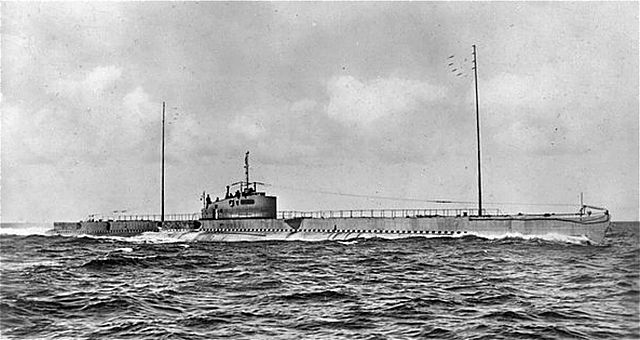
Promethee off Cherbourg in 1932.
Next stop: Developing the “1500 tonnes” design.
Already in 1924, as the first boats of the Requin class were launched, the design was criticized for some in the admiralty for its inadequate speed, unsufficient range, also asking for better rudder arrangement and size, larger torpedo capacity, and as it turned out later in exercizes, a better deck gun. The Requin in hindsight looked more as drafts for a better model when it came.
In 1924 indeed, the French Admiralty already looked up another design of “Grand Croiseur (submarine)” model, in between an oceanic and cruiser type, especially tailored for commerce raiding. Since submarines were still not limited by the the Washington treaty it was seen as an essential tool to defend French coastline and the second largest colonial Empire. Thus, the ambitious submarine naval program went through its four next enterprises:
Building a very large, “proper” cruiser submarine also much in favor by other nations (cruiser gun-armed and with a reconnaissance floatplane and motor torpedo boats for shore operations) which turned out to be the sole Surcouf, a full range of defensive “600 tonnes” coastal models for the Mediterranean (spead between civilian and militar yards), a class of minelayer submersibles, and naturally a much improved long range successor of the Requin class. Engineers just retook the same basic design and stretched it to add more engine power (it was doubled), generating a 1500 tonnes hull, 400 more than the Requins. Léon Roquebert’s “grand cruiser” type was indeed impressive at 92 m long (302 ft) for 2,000 tonnes (1,968 long tons) submerged.
Just like the 600-tonnes, since French Naval yards lacked the capacity to built them, the help of civilian yards was required. To reach the large number asked, 31 submersibles, eight yards were enlisted in their construction spanning from 1927 to 1939 for some, so more than a decade. They were arguably more successful, topping 17 to 20 knots surfaced in the latter batches, and reaching 14,000 nmi (26,000 km; 16,000 mi), plus mixing standard and 400 mm torpedoes on external mounts only for commerce raiding.
However the war was not much tender for them than for the Requins, and their WW2 career often short and gloomy, ending scuttled for most or destroyed by the allies. Only the few passed onto Free French service had more successes. A class of 31 submersibles of that scale, built in civilian yards to boote, was something however unprecedented in the interwar, showing the resolve of the 3rd Republic to built its own naval deterrence at a cost inferior to a surface battlefleet, that can’t be spread out throughout the Empire.
Read More
Books
Jean Labayle Couhat (1971). French warships of World War II. London.
Robert Gardiner; Randal Gray (1980). Conway’s All the World’s Fighting Ships, 1922-1946. London: Conway Maritime Press.
Fontenoy, Paul E. (2007). Submarines: An Illustrated History of Their Impact. ABC-CLIO.
John Moore (1990). Jane’s Fighting Ships of World War I. London.
Perepeczko, Andrzej (2014). Od Napoleona do de Gaulle’a. Flota francuska w latach 1789–1942. Oświęcim.
Lipiński, Jerzy (1999). Druga wojna światowa na morzu. Warsaw.
Parkes, Oscar (1934). Jane’s Fighting Ships 1934. London: Sampson Low, Marston & Co.
Links
historic-marine-france.com
postenavalemilitaire.com
netmarine.net
battleships-cruisers.co.uk
On uboat.net
On agasm.fr/ pdf
On navypedia.org
On navweaps.com
On u-boote.fr
On clausuchronia.wordpress.com marsouin
On museedelaresistanceenligne.org/
On fr.wikipedia.org
On naval-history.net
uboat.net requin class
Career of the Requin class
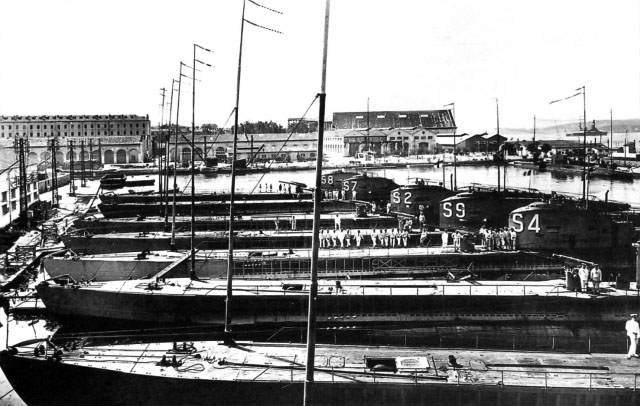
Marsouin and other Requin class in Toulon, 1929 (S 9 Phoque, S 2 Narval, S 7 Espadon, S 8 Caïman) – Musée de La Marine
From 1935 to 1937, all were overhauled to close on the better 1500 tonnes (diesels, deck gun, torpedoes, possibly AA). When WW2 broke out, all were based in Toulon, Mediterranean fleet, as part of the 4th Submarine Flotilla, soon moved to Bizerte in Tunisia. After the Armistice all except Morse (sunk June 1940) and Narval refugee in UK and later joining the FFNF (Free French Naval Forces) were impressed in the Vichy French navy and had various fates: By June 25, 1941 during Operation Exporter, Souffleur, present in the Levant fleet, was sunk off Beirut (Lebanon), spotted and torpedoed by the British submarine HMS Parthian. On November 27, 1942 the scuttling of Toulon following the German invasion of the free zone saw Caïman scuttled (later raised by the Italians, nevber repaired, sunk on March 11, 1944 by an air raid) and Marsouin which disobeyed orders and managed to escape to join the FNFL, in service until 1946.
As Italian Transport Submarines
On 8 December 1942 those poresent in Bizerte were Phoque, Requin, Espadon and Dauphin. Captured by the Germans, they were all handed over to Italy and effectively recommissioned into the Regia Marina as FR.111, FR.113, FR.114 and FR.115, but not assigned to an active combat squadron. Instead, they were rebuilt as submarine transports with both torpedo room cleared, crew and accomodations reduceds, artillery removed with just two 13.2 mm guns left (probably French Hotchkiss types). As such, they carried 50 tons of cargo, 145 tons of fuel for refuelling at sea. Inspired by German experience with the Type XIV Milchkühe they were used to resupply other Italian submarines or U-Bpootes, or resupply beleaguered garrisons. But this only was on paper. Indeed, the plan was only completed for Phoque (FR.111). Her maiden voyage started on February 28, 1943, and she was soon spotted by USN aviation and sunk near Syracuse, close to the strait of Sicily. None was completed afterwards and by Setember, the armistice meant the three remaining were scuttled by the axis to avoid capture.
 Requin (1924)
Requin (1924)
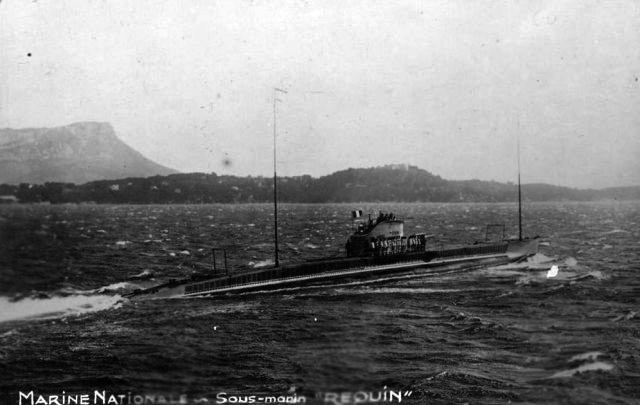
Laid down in June 1922, Requin (Q 115) was launched in July 1924 at Cherbourg NyD, commissioned in May 1926. Her first captain, during completion, sea trials, and initial training, shakedown cruise was L.V BREITTMAYER J.G.E. Her interwar career was spent in the “Levant” (French Mandate of Syria), with periodic overhauls in Bizerta, Tunisia.
As the first “modern” French submarines, Requin is plagued by many technical issues and limitations that are fixed after a major overhaul at the Forges et Chantiers de la Méditerranée (FCM) in La Seyne sur Mer near Toylon, from February 20, 1936 to January 6, 1938. As the war in Poland broke out on September 1, 1939, she is assigned to 11th Submarine Division along with her sister ships Marsouin and Narval, deployed in the Levant, for colonial defence, as surveillance of the Italian Dodecanese.
On 18.06.1940 LV. PRÉVOST-SANSAC DE TRAVERSAY became her new Commander. With the entry of Italy into the war on June, 10, she patrolled for a time off Italian west coast ports, watching traffic, and the Tyrrhenian sea. The reorganization of September 1940 saw the 11th DSM sent to Bizerte with the 3rd flotilla, 6th Light Squadron, responsible for hitting Italian traffic. Requin underwent a major refit in Bizerte (October 20 to December 10, 1940) and is back at sea for trials on December 11-13 and refresher training until the 30th.
She resumes patrols off the Italian and Libyan coasts, monitoring Italian trade and reporting on maneuvers of the Regia Marina, evading Italian MAS each time. Often by night, several collisions are narrowly avoided when she is charged in front of well-guarded Taranto and Benghazi. On June 5, 1942 she is anchored in Lake Bizerte while waiting a decison. She inspected in a floating drydock in July 15-20, 1942, revealing a poor condition. She is therefore officially decommissioned on July 22, stricken on August 4.
She was later captured by Italian forces there on 8 December 1942. Renamed FR 113 she was towed to Genoa and prepared for service with the Regia Marina but seemingly never was fully operational, due to her poor general state. On 9 September 1943, she is recaptured by German forces in Genoa, but they neither plan to integrated her into the Kriegsmarine. Instead, she is blasted to prevent capture and blockade the harbor as the allies approached by mid-1945.
 Souffleur (1924)
Souffleur (1924)
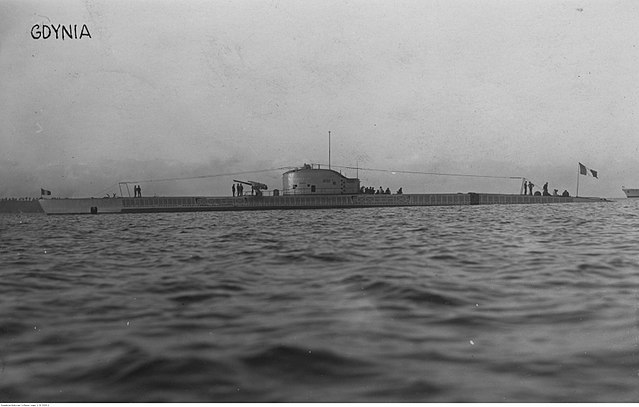
Souffleur in Gdynia, Poland
Souffleur (“Great Dolphin”) (Q 116) was built at Arsenal in Cherbourg, commissioned on August 10, 1926. After a long service in Toulon, she is sent for a major overhaul in 1935-1937 at FCM near Toulon. When WW2 started she operated with the 9th DSM with her sisters Caïman and Morse as part of the 3rd flotilla, 4th Light Squadron, in Bizerte. From March 15 to May 21 1940 she is again refitted in a floaring drydock at Bizerte, followed by sea trials (May 22-25) and refresher cruiser from May 27 to June 10, 1940 before resuming patrols, this time directed agains the Regia Marina.
The reorganization of September 1940 made her unit becoming the 6th EL and she multiplied patrols, notably in the Gulf of Sirte and up to the Dodecanese and a few forays in the Adriatic, with discrete refueling stops in Kotor. On March 14, 1942 she was anchored on Lake Bizerte awaiting a decision of the admiralty about her fate. She is inspected in the floating dock in June 5-15 and the team reports a good material condition. It is decided to use her as an experimental submarine with the GASM in Toulon. She is again modified in a floating dock in July 21-30 to have all but her two forward torpedo tubes kept, and two aft. The space is freed to house experiment equipments.
She left for trials in August 1-4 at sea, refresher cruiser in August 6-13, before operating off Toulon on the 14th for the GASM, testing engine tuning and armaments as well as new sonar tests and communication systems. She is spared the scuttling of the 27 November. Despite air attacks on Toulon in 1944 shee scape destruction, not bein stationed with the rest of the fleet but berthed near the GASM facility. The war ended, and she suffered serious engine damage on June 14, 1946. Disarmed the next day she is stricken on June 27, 1946, and moved to the Bregaillon naval cemetery, she was sold to a company at La Ciotat on September 4 and BU until October 1946.
 Marsouin (1924)
Marsouin (1924)
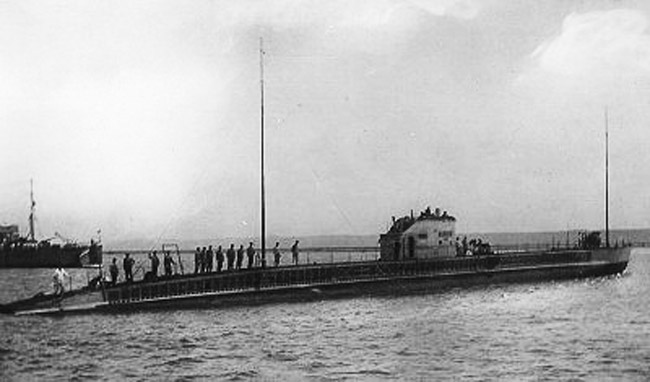
Built in Brest Arsenal as Q119, Marsouin (“porpoise”) was completed on 7 September 1927. Her initial service was the same as other Requin class: Early service at Toulon and then Bizerte.
At first she served in the 3rd Submarine Squadron from Toulon, then 6th from Bizerte. When war was declared, she was stationed in the Levant, Beirut. By December 1939, she was stationed in Morocco, assigned to the surveillance of German ships taking refuge in the Canary Islands.
After the armistice, she was assigned in Toulon and entered armistice guard duty in October 1940. Rearmed from February 1941 in the Levant naval division (back in Beirut), during allied operations there she launched torpedoes at the British cruiser HMS xxxx on June 16, 1941. After a refit in Bizerte, he was in Algiers, North Africa.
On 08.11.1942 with Operation Torch, she left Algiers for Toulon, running into a powerful artillery barrage from the Center Western Task Force, suffering aerial bombardments, shelling and ASW grenades. She survived and arrives in the the morning on the 11th in Toulon.
On the 27th she was moored in the northern harbor of Mourillon as the Germans, which launched Operation Lila arrived at the military port gates. Since it was quick to start the diesels unlike most ships which scuttled themselves, and not following instructions, a small crew of four men, three sailors and an officer, managed to depart the moorings and break free of the port, reach an allied-held one. On 30.11.1942 she arrives at the port of Algiers, just like another submersibles, the 1500 tons CASABIANCA, but at dawn. The delay was due to previous damage and very low fuel.
From there, she is repaired, and used operationally by the Free French Forces from December 1942. After a refresher training she led several patrol cruises and alongside the USN undertook a few missions off the coast of Provence in May 1943. Afterwards, she is sent back to Casablanca and assigned to the underwater listening school there. She was finally disarmed in April 1944. Condemned and discarded, written off on February 18, 1946, she is sold for demolition in Oran. Like Casabianca, she earned the Liberation Medal in 1945.
 Dauphin (1925)
Dauphin (1925)
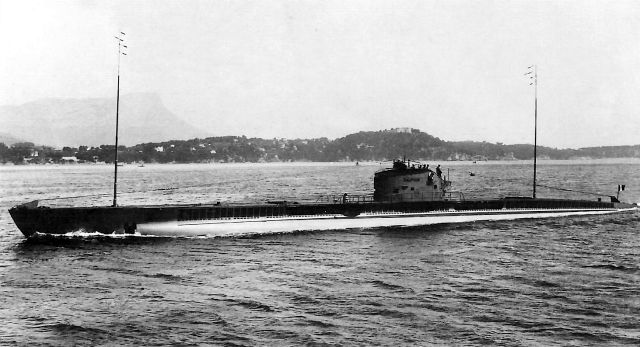
Dauphin, date unknown. Musée de la marine.
FS Dauphin (Q120) was in service on 22.11.1927. After service in Tunisia, from Bizerte, she patrolled of the Canary Islands during the Spanish civil war and in the Levant squadron, in Syria and Lebanon. She was decommissioned in Bizerte after the armistice. As a consequence of the Bizerte ultimatum of 7.12.1942, she was seized the following day by Italian authorities and towed in Pozzuoli, Italy. There, she became FR 115, prepared as a transport submarine for the Regia Marina. Transformations however dragged on. On September 9, 1943 she was seized by the Kriegsmarine at Pozzuoli. No work was done to complete her, and due to the allied invasion, she was destroyed on site, using demolition charges. By 16.01.1946 her wreck was sold after recovery of the
anchors, chains, keel ballast and 25 tonnes of copper metal under supervision by the head of the French Marine Mission in Genoa, and the remainder scrapped.
 Narval (1925)
Narval (1925)

Narval, date uknown. src.
FS Narval (“Narwhal”, Q 118) is built at the Arsenal in Cherbourg, commissioned on July 23, 1926. After service in Toulon in 1927-1935, she is refitted at the Dubigeon Yards in Nantes (November 22, 1935 – February 8, 1938). When the war broke out she was assigned to the 11th Submarine Division (11th DSM) with Marsouin and Requin, deployed in the Levant (Syria-Lebanon mandate) to had a watch on the freshly conquered Italian Dodecanese.
By September 1940 the 11th DSM is moved to Bizerte, 3rd flotilla, 6th Light Squadron. Patrols multiplied in the eastern Mediterranean and Adriatic going as far as Venice until another major refit at the floating dock of Bizerte (March 6 – June 15 1941) followed by trials and refresher cruise. On June 15, 1942 the 11th DSM is dissolved and she is inactivated, partly due to the lack of fuel.
A new inspection in drydock in August reveals a good material condition. She ends like Souffleur at the GASM for experiments, modified like the latter in September 1942, tested, and then moved to Toulon. She is used to test weapons systems and new tactics. She survived both the Toulon scuttling and landing in provence and is constantly used for trials until June 15, 1948, disarmed, moored in the naval cemetery of Bregaillon (DNM) until September and later sold for BU.
 Morse (1925)
Morse (1925)

Morse with her Mediterranean colonial white prewar livery
Morse (“Walrus”) was built at Arsenal in Cherbourg, commissioned on February 10, 1928. Like her sister-ships, she served in the same unit at Toulon until her overhaul at the Ateliers et Chantiers de Saint-Nazaire-Penhoët (Britanny) in November 15, 1935 up to November 26, 1937. In September 1939, she is assigned to the 9th sub. squadron along with Caïman and Souffleur, attached to the 3rd Flotilla, 4th Light Wing, then 6th in September 1940. She is frequently at sea, multiplying missions along the Italian coast, interrupted for a new overhaul in August 23 – October 19, the last major refit of her career in Bizerte. After trials in October and refresher cruiser in November 8 she is back to 9th DSM for more patrols notably off the channel of Otranto, gulf of Sirte, gulf of Taranto, and ports of Sicily. Technically France capitulated to Germany, not to Italy and relations of Vichy with Mussolini are still tense.
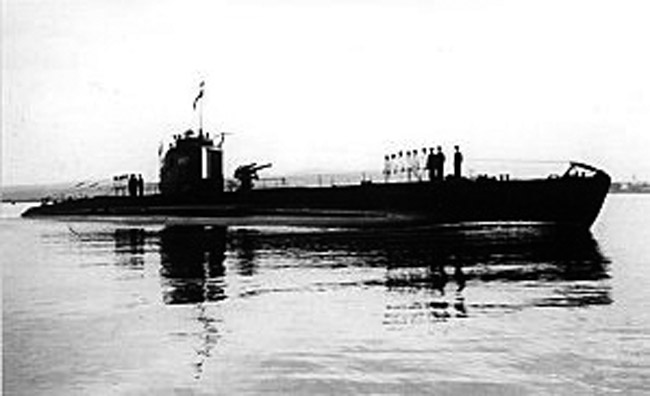
Morse in her wartime black livery, 1939
On March 21, 1942 Morse saw the dissolution of the her unit. She is inspected in floating dock by May 1942, reveals a deteriorated condition. Part of this was due to a never repair grounding near the Libyan coast. Thus, she is officially decommissioned on May 24, 1942, condemned in June and anchored on Lake Bizerte. She was found there, in even a worse condition by September 17, 1945; She is towed out at sea and ends as an aerial bombing target, taking two torpedoes and four bombs before sinking.
 Phoque (1926)
Phoque (1926)
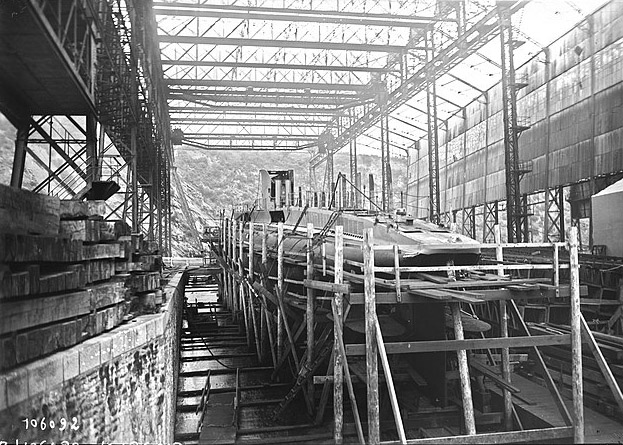
Phoque in construction, in Brest
Phoque, Q 119 (“Seal”) is built at Arsenal in Brest, commissioned on May 7, 1928. Her service was spent in Toulon, with stops in Bizerte and the Levant. In 1935 she underwent the same long overhaul
as her sisters, in Saint-Nazaire Yards on the Atlantic. Work is complete in February 8, 1938. She patrols off the Spanish coast during the civil war and when WW2 starts, she is assigned to the 10th squadron (10th DSM) with Dauphin and the Espadon. She is refitted in March 1940, and resumed patrols in the Mediterranean, assigned in particular the Strait of Sicily. On March 21, 1942, her unit is dissolved and she is inspected on the floating dock in July, revealing a satisfactory general condition. She was reassigned as a training submarine in Toulon, arriving there on August 4, 1942. Spared the fate of others in November due to her location at the Var submersible school, she is still active by June 1945, moored at the Naval Depot of the Mediterranean, in Bregaillon. She is still there on September 15, 1947 when sold for BU at La Ciotat until October 1947.
 Espadon (1926)
Espadon (1926)
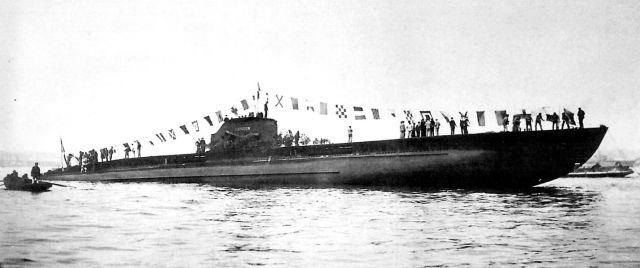
Espadon after launch, C. Picard coll.
Espadon, (“Swordfish”) Q129 was built at Arsenal in Toulon, commissioned on December 16, 1927. Like the others she served from Toulon for most of her career, with assignments in the Levant and North Africa. She was also refitted at FCM, La Seyne in 1936-1938. Joining the 10th DSM she patrolled from 1939 the eastern Mediterranean and Adriatic before a new short refit in January 16, to February 17, 1940, trials and refresher, then resuming patrols. They became much more offensive from June 1940, closing on western ports and with several close call encounters with patrol vessels of the Regia Marina.
Espadon was placed in reserve on May 4, 1942 when her unit is dissolved, and in floating dock for inspection in June 24-30. Due to her poor general condition it is decided to have her decommissioned on July 2, 1942. Stricken on July 12, 1942 she is anchored permanently on Lake Bizerte. However, after the ultimatim of 7.12.1942 she is seize the following day in Bizerte, and allegedly towed to Castellamare Di Stabia where for conversion as the transport submersible SM FR 114 for the Regia Marina. However work never commenced. She is captured as is on 09.09.1943 by Kriegsmarine and destroyed on the spot, or for another sourcen stays in Bizerte until May 15, 1947 and is sold for BU at a local yard in Arzew.
 Caïman (1927)
Caïman (1927)
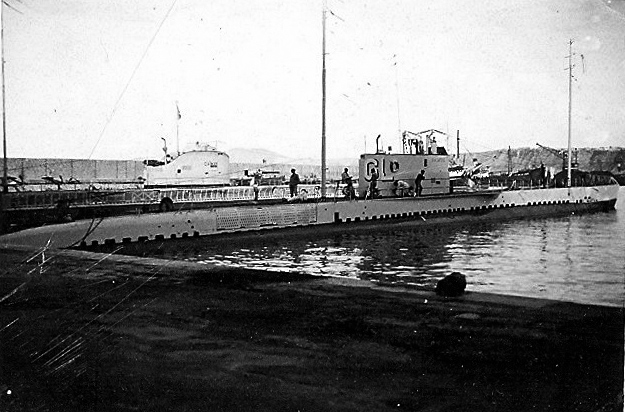
Caiman and Galatee (a 600 tonnes) at Oran, 1932.
Caiman (“Cayman”) was built at Cherbourg Arsenal, commissioned on February 7, 1928. Like the other sher served in the Mediterranean, from Toulon mostly. She was also overhauled in 1937-37 at the Saint-Nazaire-Penhoët Yards, and in 1939 served with the 9th DSM, a division attached to the 3rd Flotilla, 4th Light Squadron. She had another refit in May 22 – August 22 1940 followed by trials and a refresher cruise, and then a reorganization of September 1940 keeping her in the 9th DSM, but with the 6th Light Wing. She multiplied patrols in the eastern Mediterranean and especially in the Italian Dodecanese with stops in Beirut and Cypru or the Adriatic in the waters of Bari and Venice.
On March 21, 1942, Morse was placed in reserve following the dissolution of the 9th DSM, making however two more patrols until June 4, 1942, as independent. In drydock at Bizerte in June she was flagged a in “good material condition” but to her age, resumed service as a training submarine. She left Tunisia on July for Toulon and served there until the end of the war, and until March 14, 1947, decommissioned after a diesel engine accident. On May 5 she is stricke, and spent as a target for ASW and torpedo in exercises in May 16-25 1948.

 Latest Facebook Entry -
Latest Facebook Entry -  X(Tweeter) Naval Encyclopedia's deck archive
X(Tweeter) Naval Encyclopedia's deck archive Instagram (@navalencyc)
Instagram (@navalencyc)





 French Navy
French Navy Royal Navy
Royal Navy Russian Navy
Russian Navy Armada Espanola
Armada Espanola Austrian Navy
Austrian Navy K.u.K. Kriegsmarine
K.u.K. Kriegsmarine Dansk Marine
Dansk Marine Nautiko Hellenon
Nautiko Hellenon Koninklije Marine 1870
Koninklije Marine 1870 Marinha do Brasil
Marinha do Brasil Osmanlı Donanması
Osmanlı Donanması Marina Do Peru
Marina Do Peru Marinha do Portugal
Marinha do Portugal Regia Marina 1870
Regia Marina 1870 Nihhon Kaigun 1870
Nihhon Kaigun 1870 Preußische Marine 1870
Preußische Marine 1870 Russkiy Flot 1870
Russkiy Flot 1870 Svenska marinen
Svenska marinen Søværnet
Søværnet Union Navy
Union Navy Confederate Navy
Confederate Navy Armada de Argentina
Armada de Argentina Imperial Chinese Navy
Imperial Chinese Navy Marinha do Portugal
Marinha do Portugal Mexico
Mexico Kaiserliche Marine
Kaiserliche Marine 1898 US Navy
1898 US Navy Sovietskiy Flot
Sovietskiy Flot Royal Canadian Navy
Royal Canadian Navy Royal Australian Navy
Royal Australian Navy RNZN Fleet
RNZN Fleet Chinese Navy 1937
Chinese Navy 1937 Kriegsmarine
Kriegsmarine Chilean Navy
Chilean Navy Danish Navy
Danish Navy Finnish Navy
Finnish Navy Hellenic Navy
Hellenic Navy Polish Navy
Polish Navy Romanian Navy
Romanian Navy Turkish Navy
Turkish Navy Royal Yugoslav Navy
Royal Yugoslav Navy Royal Thai Navy
Royal Thai Navy Minor Navies
Minor Navies Albania
Albania Austria
Austria Belgium
Belgium Columbia
Columbia Costa Rica
Costa Rica Cuba
Cuba Czechoslovakia
Czechoslovakia Dominican Republic
Dominican Republic Haiti
Haiti Hungary
Hungary Honduras
Honduras Estonia
Estonia Iceland
Iceland Eire
Eire Equador
Equador Iran
Iran Iraq
Iraq Latvia
Latvia Liberia
Liberia Lithuania
Lithuania Mandchukuo
Mandchukuo Morocco
Morocco Nicaragua
Nicaragua Persia
Persia San Salvador
San Salvador Sarawak
Sarawak Uruguay
Uruguay Venezuela
Venezuela Zanzibar
Zanzibar Warsaw Pact Navies
Warsaw Pact Navies Bulgaria
Bulgaria Hungary
Hungary

 Bundesmarine
Bundesmarine Dutch Navy
Dutch Navy Hellenic Navy
Hellenic Navy Marina Militare
Marina Militare Yugoslav Navy
Yugoslav Navy Chinese Navy
Chinese Navy Indian Navy
Indian Navy Indonesian Navy
Indonesian Navy JMSDF
JMSDF North Korean Navy
North Korean Navy Pakistani Navy
Pakistani Navy Philippines Navy
Philippines Navy ROKN
ROKN Rep. of Singapore Navy
Rep. of Singapore Navy Taiwanese Navy
Taiwanese Navy IDF Navy
IDF Navy Saudi Navy
Saudi Navy Royal New Zealand Navy
Royal New Zealand Navy Egyptian Navy
Egyptian Navy South African Navy
South African Navy






























 Ukrainian Navy
Ukrainian Navy dbodesign
dbodesign